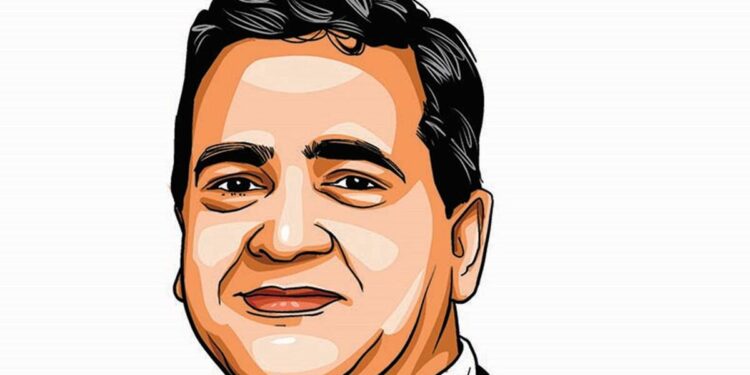 Sumit Joshi portrait
Sumit Joshi portraitBy Sumit Joshi
What will it take to recover fully from the effects of Covid-19? Effective prevention and treatment, to be sure, but there are also psychological and emotional aspects. People will have to feel that their health is assured in environments outside of the home, and that they can trust the managers and operators of those environments to keep them safe and to rapidly respond to new problems as they occur.
The disinfectant virtues of UV-C
Safe spaces start with decontamination. And one powerful way to decontaminate the places that we inhabit, from offices to stores to public transport facilities and beyond, is by deploying ultraviolet-C (UV-C) light. UV-C is as useful against SARS-CoV-2.
The challenge is in using UV-C in a way that’s safe for people—and that’s where lighting controls come in. Automated disinfection luminaires can sense when a room has become empty and then disinfect the area, while ensuring necessary safeguards in case of movement detection.
Managing space efficiently and safely
In pandemic conditions, the more space each of us has, and the more consciously we occupy it, the safer we’ll be. Here too, IoT technology can play a role. In the Covid-19 era, finding a workspace in an uncrowded part of a building is important. A colour-coded map on a smartphone that shows a staffer where the crowded parts of the office are isn’t only a convenience: it could be a lifesaver. And thanks to data, different parts of an office can be subjected, in a most efficient way, to different disinfectant regimes depending on how heavily they are used.
Data can inform safer office design, too. Stronger ventilation systems or extra windows can be built into those places where more people tend to congregate.
A new future for in-store retail
Smart tech can also play a big role as brick-and-mortar retail recovers from the pandemic. Tracking applications can help store managers keep numbers of shoppers at safe levels, without guesswork or the need to station employees with counters and hand sanitizer by the door. Wayfinding applications that load customised maps onto shoppers’ phones can lead them directly to the items they’re seeking and then get them out of the store fast, for safety’s sake.
And just as at the office, data will improve how stores are physically designed – again, in the interest of stopping the spread.
New trends in healthcare and beyond
In healthcare, meanwhile, though tele-consultation and contactless methods have diagnosed people without forcing them out to clinics, hospitals, and other places where they can infect others, or get infected, going further, automated fever-screening kits can gauge workers’ temperatures as they enter buildings. Geofencing technologies can help to maintain necessary quarantine regimes. Automated “access control” corridors will disinfect people and monitor their health as they enter shared spaces.
Indeed, if there’s been a “bright side” to this crisis, it’s in showing that human ingenuity isn’t helpless in the face of it. As tech has risen in general to the Covid-19 challenge – by making possible, for example, a largely successful transition to at-home work – IoT applications in particular can point the way out of the lockdown era and toward a more secure and resilient future.
The writer is CEO & MD, Signify Innovations – South Asia (formerly Philips Lighting)
Get live Stock Prices from BSE, NSE, US Market and latest NAV, portfolio of Mutual Funds, Check out latest IPO News, Best Performing IPOs, calculate your tax by Income Tax Calculator, know market’s Top Gainers, Top Losers & Best Equity Funds. Like us on Facebook and follow us on Twitter.
![]() Financial Express is now on Telegram. Click here to join our channel and stay updated with the latest Biz news and updates.
Financial Express is now on Telegram. Click here to join our channel and stay updated with the latest Biz news and updates.













